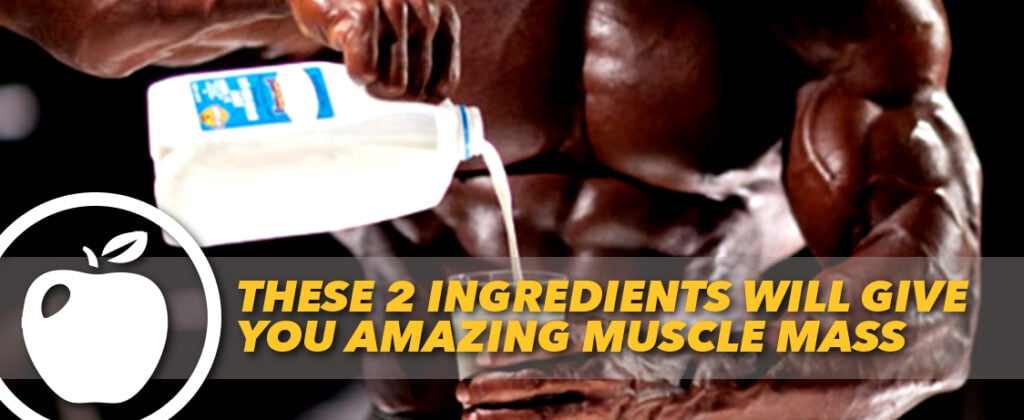Caffeine and Lactate Supplements Increase Muscle Mass (Continued)
Satellite cells are essential for muscle growth to take place; they lay dormant until activated to form new muscle fibers. The researchers looked at the impact of lactate and caffeine first in test tubes and then in animal studies (i.e. in vivo). First, the researchers found that when they mixed the lactate and caffeine in test tubes and mixed them with growth factors that lactate significantly increased myogenin and follistatin protein levels and phosphorylation of P70S6K (i.e. all three are growth promoters) while decreasing the levels of the muscle growth inhibitor myostatin relative to the control. Lactate and caffeine combination significantly increased the anabolic protein cellular pathways Pax7, MyoD and Ki67 in addition to myogenin, relative to controls. Lactate and caffeine combination also significantly increased anabolic signaling pathway follistatin expression relative to controls and stimulated the anabolic signaling pathway mTOR and P70S6K.
When the researchers examined the powerful combination when administered to male rats, they found similar increases in the anabolic signaling pathways. In an in vivo study, male rats were assigned to the control, exercise and lactate and caffeine supplementation groups. Lactate and caffeine was orally administered daily. The lactate and caffeine exercise group and exercise only groups were exercised on a treadmill, running for 30 minutes at low intensity every other day for 4 weeks. The lactate and caffeine exercise group experienced a significant increase in the mass of the lower leg muscle groups gastrocnemius (GA) and tibialis anterior (TA) relative to both the sedentary and exercise only groups. The lactate and caffeine exercise group experienced a significant increase in myogenin and follistatin expression of GA relative to the exercise only group. These results suggest that administration of LC can effectively increase muscle mass concomitant with elevated numbers of myonuclei, even with low-intensity exercise training, via activated satellite cells and anabolic signals. The really exciting aspect of this study seems to suggest that taking caffeine combined with the high intensity exercise which elicits high levels of lactic acid is a good combination for muscle growth and increases in anabolic pathways.
.
References:
Takarada Y, Sato Y, Ishii N. Effects of resistance exercise combined with vascular occlusion on muscle function in athletes. Eur J Appl Physiol 2002;86:308–14.
Takarada Y, Takazawa H, Sato Y, Takebayashi S, Tanaka Y, Ishii N. Effects of resistance exercise combined with moderate vascular occlusion on muscular function in humans. J Appl Physiol 2000;88:2097–106.
Takarada Y, Tsuruta T, Ishii N. Cooperative effects of exercise and occlusive stimuli on muscular function in low-intensity resistance exercise with moderate vascular occlusion. Jpn J Physiol 2004;54:585–92.
Yoshimi Oishi , Hayato Tsukamoto , Takumi Yokokawa , Keisuke Hirotsu , Mariko Shimazu , Kenji Uchida , Hironori Tomi , Kazuhiko Higashida , Nobumasa Iwanaka , Takeshi Hashimoto Mixed lactate and caffeine compound increases satellite cell activity and anabolic signals for muscle hypertrophy. Journal of Applied Physiology January 2015
Fry CS, Glynn EL, Drummond MJ, Timmerman KL, Fujita S, Abe T, et al. Blood flow restriction exercise stimulates mTORC1 signaling and muscle protein synthesis in older men. J Appl Physiol 2010;108:1199–209.
Fujita S, Abe T, Drummond MJ, Cadenas JG, Dreyer HC, Sato Y, et al. Blood flow restriction during low-intensity resistance exercise increases S6K1 phosphorylation and muscle protein synthesis. J Appl Physiol 2007;103:903–10.
Goto K, Ishii N, Kizuka T, Takamatsu K. The impact of metabolic stress on hormonal responses and muscular adaptations. Med Sci Sports Exerc 2005;37:955–63.
Robbie Durand has been in the sports supplement and bodybuilding industry for 15 years. He has contributed to many national magazines and web sites. He has an M.A. in exercise physiology from Southeastern University and a B.A. in Dietetics from Louisiana State University.








